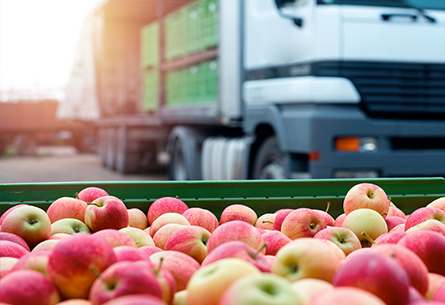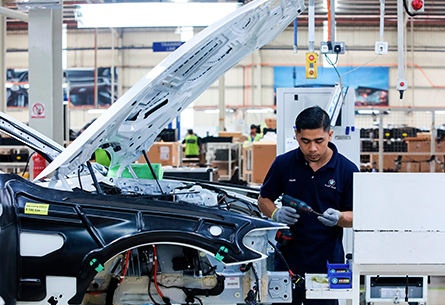Colombia offered an import quota for seasoned fresh legs of up to 26,000 tons, with a growth rate of 4%. An important aspect to note that the administration of this import quota will be subject to an auction mechanism which allows Colombians to share in the revenues generated by the tariff-free quota (Export Trading Company). Additionally, we achieved a quantity safeguard that is applicable during the period of relief, with a trigger of 130%.
Colombian products with 0% tariff
- 99% of Colombian qualifying industrial and textile goods will become duty free upon the implementation of the FTA.
- 89% of Colombian agricultural goods will become duty free upon implementation of the FTA.
- Duties on many other tariff lines will be phased out over a period of up to 15 years, with some agricultural tariff rate quotas. While Colombia is expected to fill its new sugar TRQ, the FTA is likely to have a minor effect on U.S. imports and production of sugar and sugar containing products.

Key facts
The Colombia- U.S. FTA promotes trade in goods by eliminating tariff barriers, and by promoting the harmonization of technical regulations between both parties. As a result, FTA supports economic growth in both countries.
The FTA supports American jobs and improves American competitiveness since many American businesses use imports under this program as inputs to manufacture goods in the United States.
It is expected that the agreement will be effective in the second half of 2012, once Colombia accomplish all the agreement laws, regulations and policies. USTR is helping to accomplish these requirements as quickly as possible.
Colombia’s government is ensuring labor laws by promoting more protection rights for workers, to please and accomplish the strategic goals of the bilateral Labor Action Plan.
The USTR General Counsel, Tim Reif said that the FTA with Colombia is “well on the road” and is likely to be the next FTA to see implementation -GBD event on the pending FTAs.
United States Trade Representative Ron Kirk said “USTR has already started the work necessary to bring these agreements into force as soon as possible”- September 2011.
Colombia asked assistance in its labor to upgrade its workers rights from both the International Labor Organization and U.S. government. Mr. Kirk said:“It feels like they are absolutely meeting both the letter and spirit of what we asked them to do”.
Colombian products with 0% tariff
ATPDEA
The approval of the FTA extends the Andean Trade Promotion and Drug Eradication Act, ATPDEA, which was renewed until July 2013. The tariff preferences that many Colombian products have had shall be maintained with the FTA and therefore, sectors such as flowers, apparel, tobacco, cocoa, plastics and leather manufacturing, among others, shall be benefited.
In fact, both the ATPDEA preferences as well as the others that were agreed upon, shall be maintained over time, given that their persistence shall not be subject to unilateral U.S. Government and Congress decisions.
Agreements texts
The FTA is an agreement that generates opportunities for all Colombians, as it contributes to the creation of quality jobs and the improvement of the national economy’s performance. It benefits the exports sector, which will be able to sell its products and services under favorable conditions in the U.S. market.
The subjects that were negotiated were market access, in its two aspects (industrial and agricultural), intellectual property, investment regime, Government acquisitions, conflict resolution, competency, e-trade, services, environment and labor, among others.
The text of the agreement is embodied in one preamble and 23 chapters. The chapters cover aspects that reflect the general agreed-upon disciplines, many of which are common in multilateral and bilateral negotiations, and incorporate particular elements obtained by Colombia as well as by the United States in the negotiation.
For more details on the agreement, visit the Ministry of Trade, Industry and Tourism website at: http://www.tlc.gov.co/
FAQs about TLC
It is true that cars will come down in price, but only gradually. In this case, we agreed to a period of 10 years from the entry into force of the FTA, so that the impact of tariff reductions will be gradually phased in.
The items that are not produced in the country, such as tractors, trolley cars, vehicles for over 16 passengers, 4x4’s of 3,000 cc that are not campers, dump trucks, drilling trucks, sweepers, or radiological vehicles.
This will be five years for car bodies and motorcycles between 500 and 800 cc, and ten years for all gasoline or diesel vehicles between 1,500 and 3,000 cc, as well as jeeps from 1,500 to 3,000 cc, tow trucks, cleaning trucks, and motorcycles and scooters from 50 to 500 cc.
No type of used vehicle or any other used item may enter Colombia. The Andean Automotive Agreement prohibits the importation of used vehicles, and as this Agreement is already in force, the FTA with the United States does not remove or modify it.
The AAA Committee accepted the request to specify that all new vehicles (including cold balances) that are imported or assembled in Colombia comply with regulations established by the Ministry of Environment and Sustainable Development.
For this sector, the United States opens many opportunities. Antioquia is one of the departments that will benefit from the FTA, as it has several auto parts manufacturing companies. The idea is that foreign investors will come to settle in the country and use Colombia as an export platform to other regions of South America.
This activity will gain great opportunities, because long-term preferences were achieved for products, such as lingerie, textiles for the home, swimwear, and fashion in general. The permanence of the tariff benefits afforded by the FTA gives ample coverage for the industry since the preferences have been extended to 11 new lines, which will positively impact the business of the sector.
The FTA opens spaces for the import of machinery, which can help the industry to modernize.
Under the ATPDEA, mainly products, such as shirts, socks, and jeans, were covered. Now, the opportunities will be extended to the whole chain.







